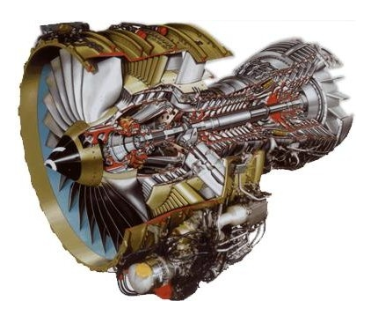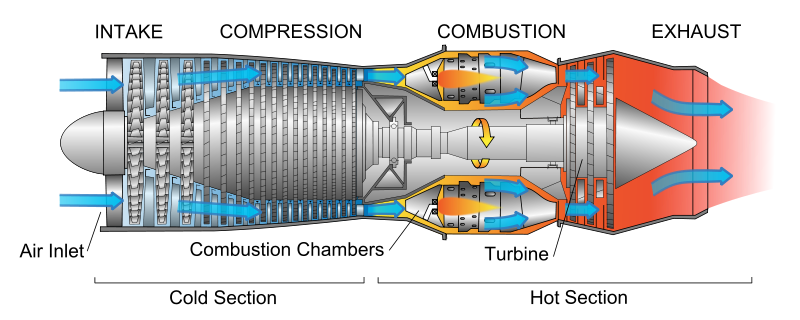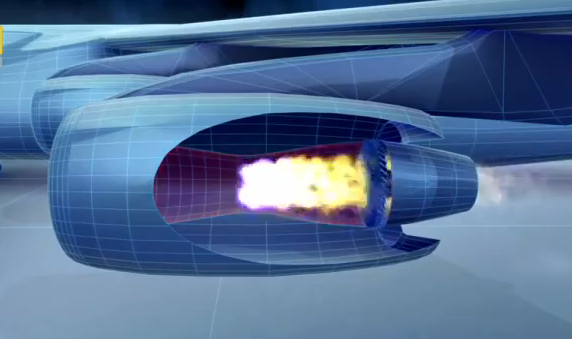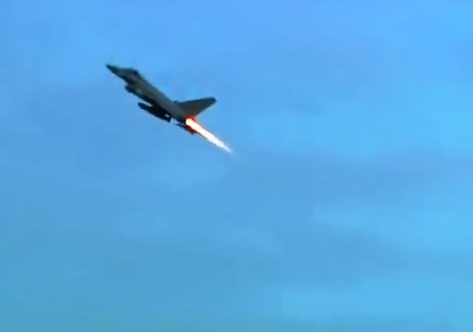How a Jet Engine Works

In this article, we will go over how a jet engine works in an airplane.
A jet engine is the part of the aircraft which creates thrust. Thrust is the force which moves planes forward. This is how a plane overcomes drag, created by air resistance, and moves forward through the air at over 600mph.
So how does a jet engine do this?
This is the concept which we will explore now.
First of all, a jet engine is a fuel or gasoline engine. This means it utilizes fuel in order to run. Very similarly to a car engine, it uses the energy created from the combustion of fuel in order to create mechanical motion.
If you know how a car works, a car engine takes fuel, mixes it with air, and ignites the fuel. This ignition of the fuel, created by the spark plugs of the car, ignites the fuel, which creates a ton of heat energy. This heat energy expands and pushes the piston of the car down. The piston is then attached to a crankshaft, which is what creates the rotational motion, which is used to turn the wheels.
This priniciple of internal combustion is if you take any high-energy fuel such as gasoline and place it in a small enclosed space and ignite it, a great amount of energy is released in the form of explanding gas. This expanding gas can push down components and, thus, create mechanical motion.
Now let's go to how airplanes work. Airplanes, like cars, also utilize
internal combustion to create motion, but in a different way.

This image is courtesy of Wikipedia
In an airplane, the massive engines suck in air. This air is necessary to create the fuel/air mixture which will then be ignited. The plane takes in air and then compresses it during the compression. After the air is compressed so that it can be in a small area, it then enters the combustion chamber of the engine. In this combustion chamber, fuel is then added to the air and ignited. This ignition creates a massive amount of heat energy. This heat energy is then pushed forcefully through the only exit of the engine, which is the exhaust.
Airplane engines utilize Newton's third principle, which is for every
action, there is an opposite and equal reaction. Being that massive amounts of hot
air is pushed through the exhaust through the rear of the plane, the opposite and equal
reaction is it thrusts the engines of the plane forward, creating the forward thrust.
So as the gases come shooting out of the engine, it thrusts the engine forward in the
opposite direction with an equal force.

The key to an airplane engine is that the escaping air can only go through one exit, the back of the engine. This hot air shoots out of the rear of the engine with tremendous force. The opposite force then pushes forward, creating the forward motion. The engine having one exit to escape from is the key.
This is why when you look at planes, they always have tremendous heat
energy coming from the rear, such as the jet seen below:

So with jet engines, if you take in air, mix it with fuel, ignite and burn the fuel, massive amounts of heat energy are created. This heat energy
comes shooting through the back. Being that for every action, there is an opposite and equal reaction, the engines (and, thus, plane) are shot forward. This occurs
throughout the whole flight, creating thrust, through the whole trip.